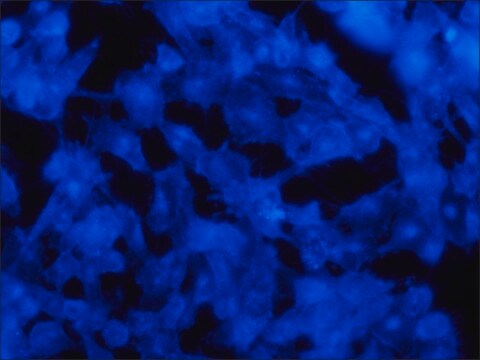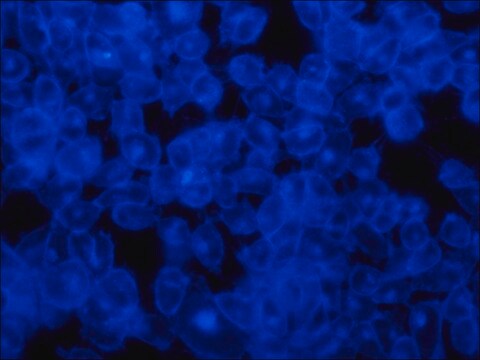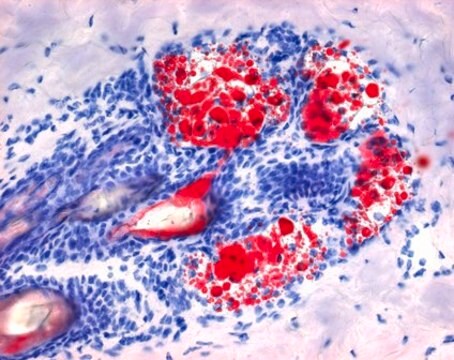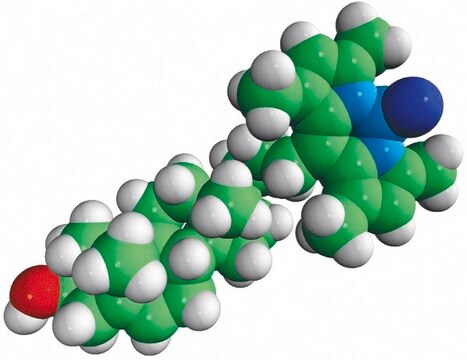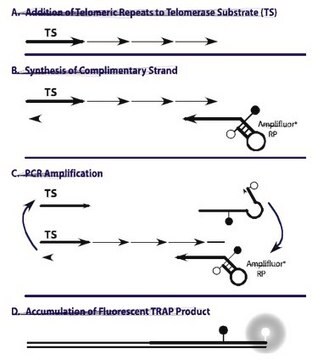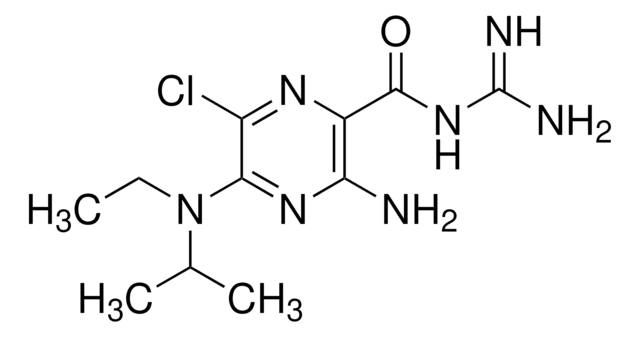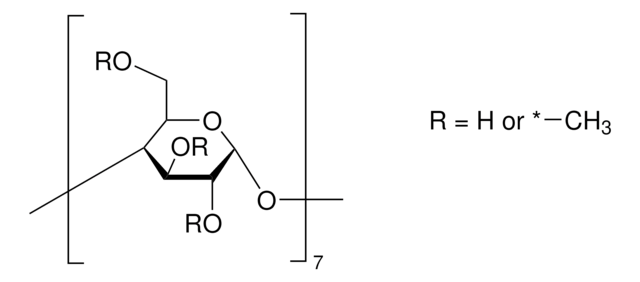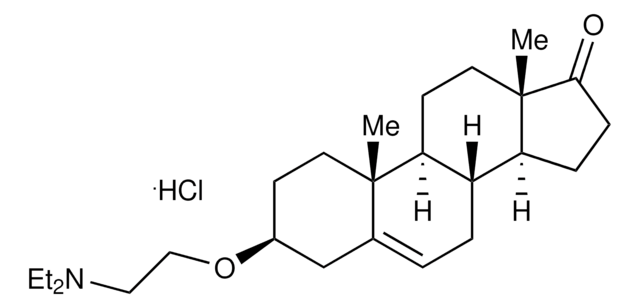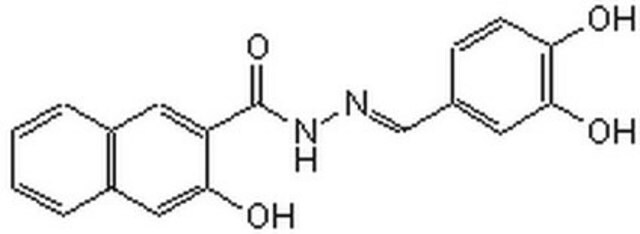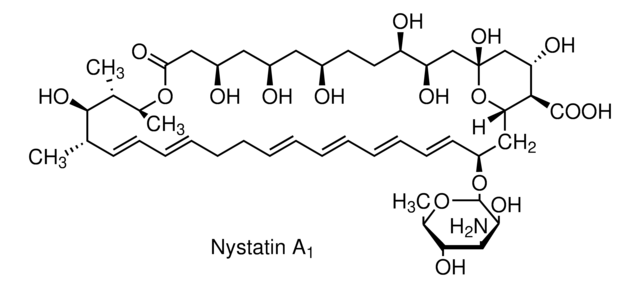Alle Fotos(1)
Wichtige Dokumente
SAE0088
Filipin complex ready made solution
from Streptomyces filipinensis, 5mg/ml in DMSO based solution
Synonym(e):
Filipin solution
Anmeldenzur Ansicht organisationsspezifischer und vertraglich vereinbarter Preise
Alle Fotos(1)
About This Item
UNSPSC-Code:
12352200
NACRES:
NA.77
Empfohlene Produkte
Assay
≥90% (HPLC)
Form
ready-to-use solution
Lagerbedingungen
protect from light
Versandbedingung
dry ice
Lagertemp.
−20°C
Allgemeine Beschreibung
Filipin Complex, the collective name given to family of isomeric polyene macrolides isolated from cultures of S. filipinensis, with Filipin III being the majority part of the complex.
Anwendung
Filipin complex readymade solution has been used in the staining of HeLa cells for cytoskeletal imaging.
Filipin has been used in a double staining procedure as a probe for the detection of lipoproteins in polyacrylamide gel and immobilized on nitrocellulose membranes. It is also widely used to localize and quantitate unesterified cholesterol by virtue of a specific fluorescent complex.
Biochem./physiol. Wirkung
Filipin is an antibiotic with antifungal functionality. Filipin complex has been found to alter cell membrane structure by interacting with the membrane sterols ergosterols and cholesterol. On binding to cholesterol, filipin shows fluorescence shift. As such, filipin complex has become a useful tool for diagnosis of Niemann-Pick type C disease, and for detection and quantification of cholesterol in cell membranes and lipid quantification in brain.
Sonstige Hinweise
Filipin complex ready made solution is very sensitive to air and light. Upon receipt aliquot and store at -20°C. Avoid freeze thaw cycles.
Filipin complex is used in various concentrations depending on the specific protocol used. Dilute 5mg/ml stock solution with appropriate buffer according to the used protocol.
Filipin complex interaction with cholesterol alters the absorption and fluorescence spectra, for visualization with a fluorescence microscope use excitation at 340-380 nm and emission at 385-470 nm (Filipin fluorescent staining photo-bleaches very rapidly, thus the sample should be analyzed immediately).
Filipin complex is used in various concentrations depending on the specific protocol used. Dilute 5mg/ml stock solution with appropriate buffer according to the used protocol.
Filipin complex interaction with cholesterol alters the absorption and fluorescence spectra, for visualization with a fluorescence microscope use excitation at 340-380 nm and emission at 385-470 nm (Filipin fluorescent staining photo-bleaches very rapidly, thus the sample should be analyzed immediately).
Lagerklassenschlüssel
10 - Combustible liquids
WGK
WGK 2
Flammpunkt (°F)
188.6 °F - closed cup
Flammpunkt (°C)
87 °C - closed cup
Hier finden Sie alle aktuellen Versionen:
Analysenzertifikate (COA)
Lot/Batch Number
Die passende Version wird nicht angezeigt?
Wenn Sie eine bestimmte Version benötigen, können Sie anhand der Lot- oder Chargennummer nach einem spezifischen Zertifikat suchen.
Besitzen Sie dieses Produkt bereits?
In der Dokumentenbibliothek finden Sie die Dokumentation zu den Produkten, die Sie kürzlich erworben haben.
Kunden haben sich ebenfalls angesehen
Filipin recognizes both GM1 and cholesterol in GM1 gangliosidosis mouse brain
Arthur JR, et al.
Journal of Lipid Research, 52(7), 1345-1351 (2011)
The pentaene macrolide antibiotic filipin prefers more rigid DPPC bilayers: a fluorescence pressure dependence study
Castanho MRB, et al.
Biochimica et Biophysica Acta - Biomembranes, 1419(1), 1-14 (1999)
Analysis of cholesterol trafficking with fluorescent probes
Frederick R. Maxfield and Daniel Wustner
Methods in Cell Biology, 367-393 (2012)
A FRET sensor of C-terminal movement reveals VRAC activation by plasma membrane DAG signaling rather than ionic strength
Konig B, et al.
eLife, 8, e45421-e45421 (2019)
Nicole Collette et al.
Molecular therapy. Methods & clinical development, 23, 286-295 (2021-11-04)
Targeting host factors for anti-viral development offers several potential advantages over traditional countermeasures that include broad-spectrum activity and prevention of resistance. Characterization of host factors in animal models provides strong evidence of their involvement in disease pathogenesis, but the feasibility
Unser Team von Wissenschaftlern verfügt über Erfahrung in allen Forschungsbereichen einschließlich Life Science, Materialwissenschaften, chemischer Synthese, Chromatographie, Analytik und vielen mehr..
Setzen Sie sich mit dem technischen Dienst in Verbindung.